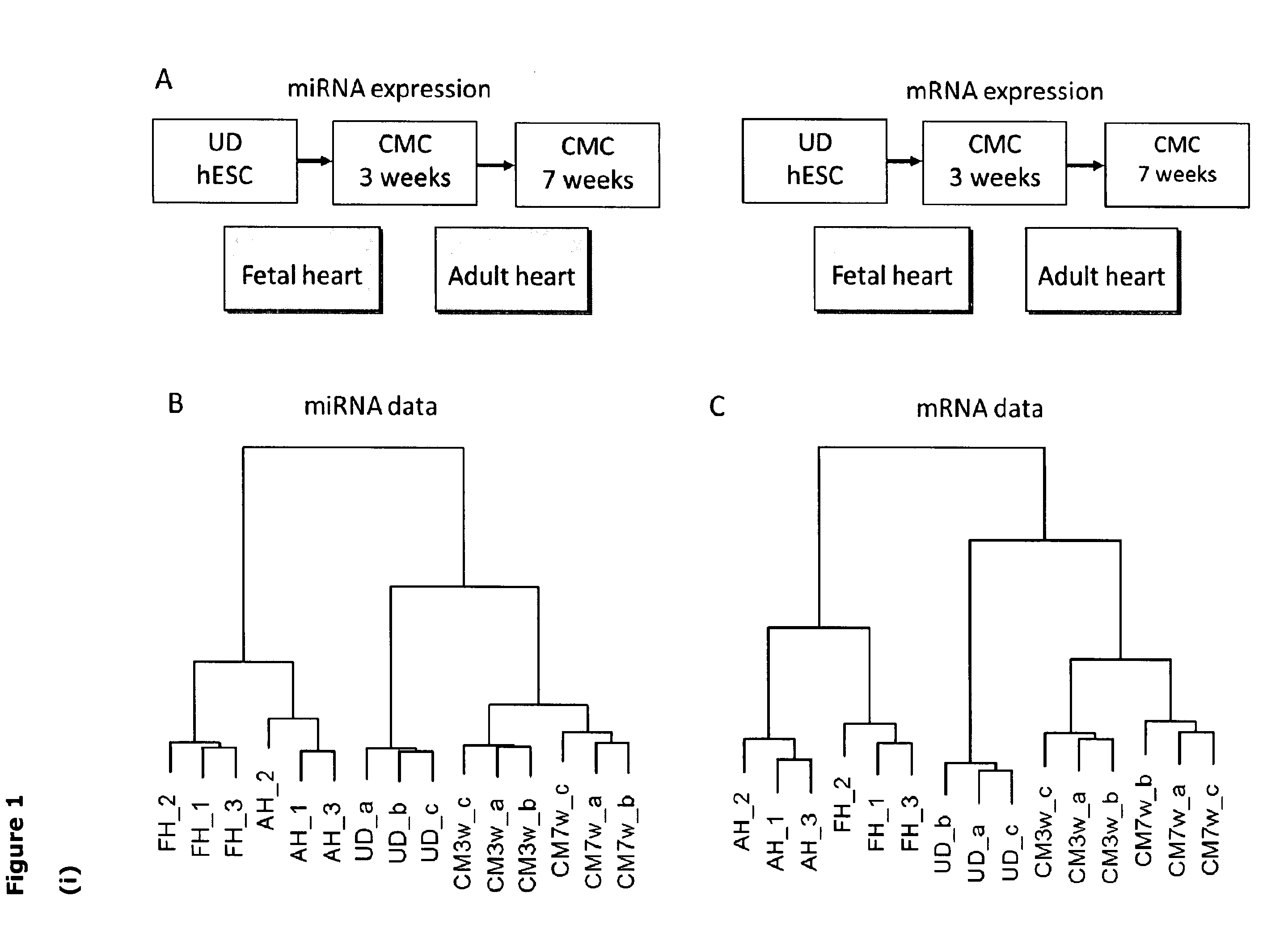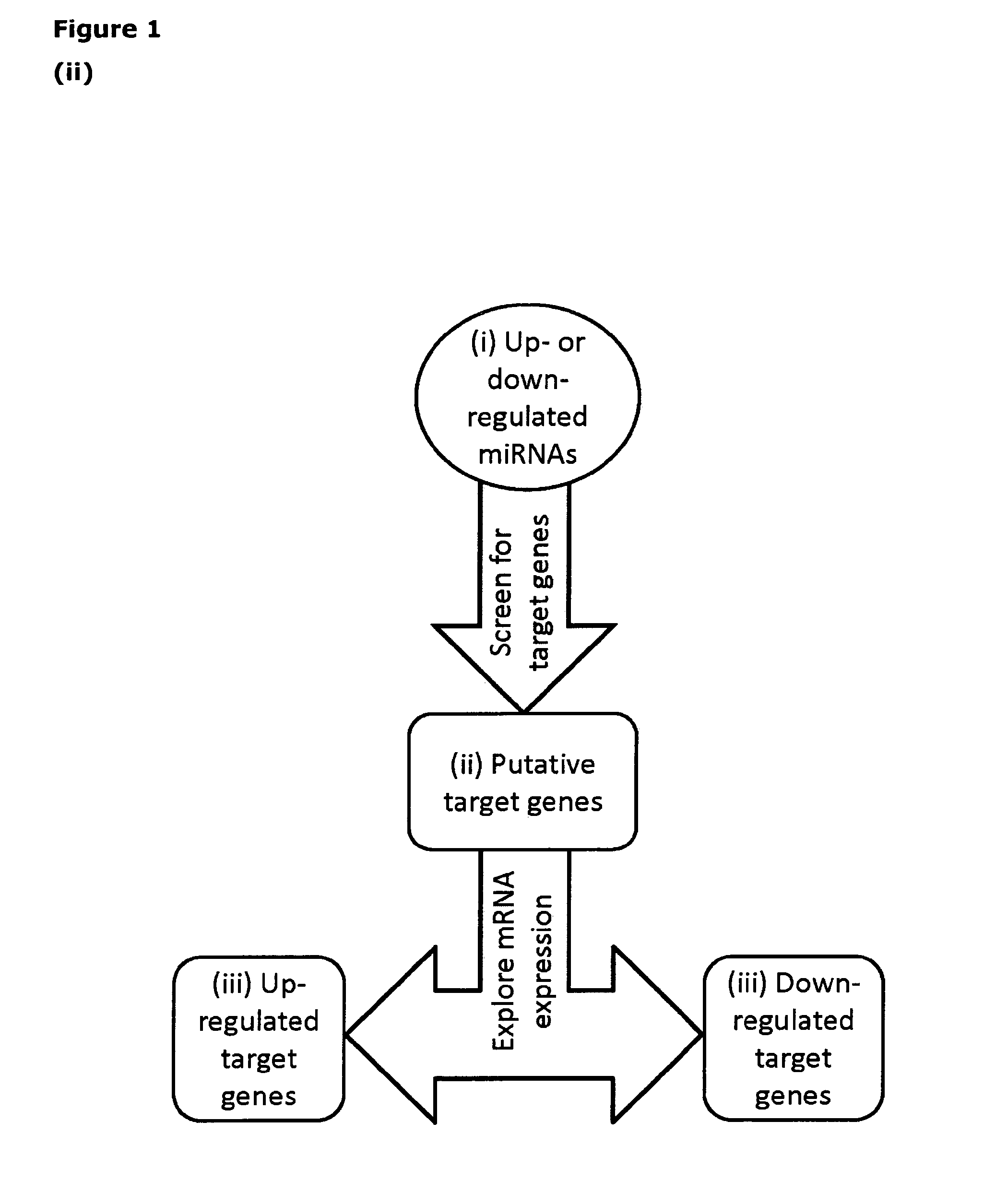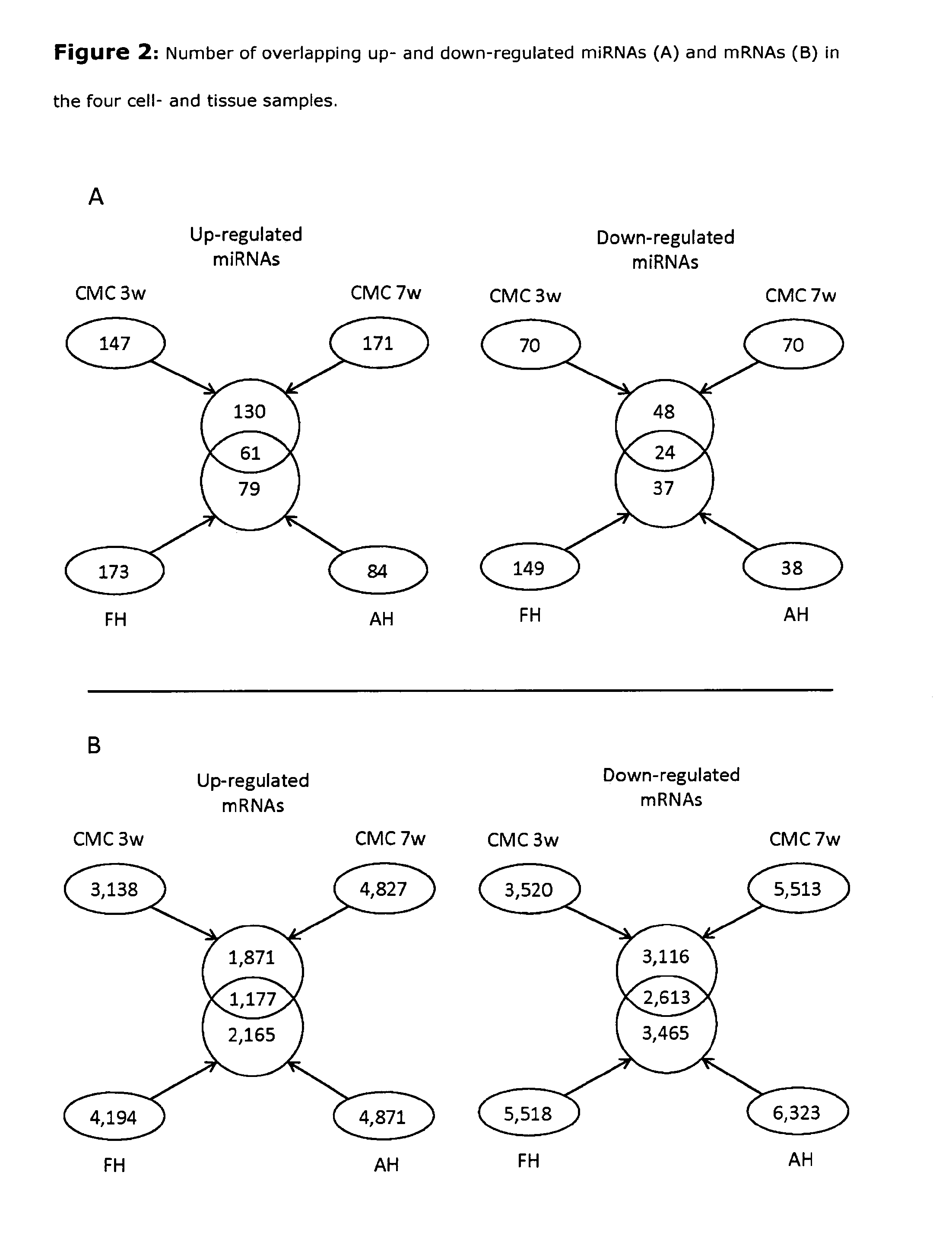Novel micrornas for the detection and isolation of human embryonic stem cell-derived cardiac cell types
a human embryonic stem cell and microrna technology, applied in the field of humanderived micrornas, can solve the problems of toxic to animals, difficult validation of mirna targets, and difficulty in correlating them with specific mirna phenotypes, and achieves stable storage or manufacturing conditions, easy or cheaper manufacturing, and increased binding affinity to targets.
- Summary
- Abstract
- Description
- Claims
- Application Information
AI Technical Summary
Benefits of technology
Problems solved by technology
Method used
Image
Examples
example 1
Generation of Cardiac-Specific microRNAs
[0071]Cardiac differentiation was performed as described previously using a previously established human embryonic stem cell line (SA002, Cellartis AB, www.cellartis.com). Briefly, to initiate differentiation 3D cell aggregates were formed in 96-well plates. After 3-5 days, the aggregates were plated onto gelatine-coated culture dishes for further differentiation and maintenance. Spontaneously beating CMCs were harvested at 3- and 7 weeks post-plating by mechanical dissection.
example 2
Isolation of Specific microRNAs from hPS, Adult Cardiac and Foetal Cardiac Cell Types
[0072]Total RNA was extracted using Ambion miRVana miRNA isolation kit, preserving small molecules according to the manufacturer's instructions (Ambion, Inc., www.ambion.com). Quantification of nucleic acids was performed on NanoDrop ND-1000 (NanoDrop, www.nanodrop.com). Microarray experiments were conducted in parallel to measure both miRNA and mRNA expression from paired samples. The material consisted of samples of undifferentiated hESCs and hESC-derived CMCs cultured for 3- (CMC3w) and 7 weeks (CMC7w) after onset of differentiation. In addition, samples from fetal heart (FH) and adult heart (AH) (Yorkshire Bioscience, www.york-bio.com) were included as reference material [FIG. 1i)]. The experiments were repeated three times to generate biological replicates, and the human reference RNA material was obtained from three separate batches. The quality of the RNA and cDNA, labeled by in vitro transcr...
example 3
Identification of Differentially Expressed miRNAs and mRNAs
[0074]MicroRNAs that were significantly up- or down-regulated in CMC3w, CMC7w, FH, and AH compared to undifferentiated hESCs (UD) were identified using the Significant Analysis of Microarray data (SAM) algorithm 16. SAM controls for false discovery rate (FDR), and miRNAs with an FDR<0.05 were here defined as differentially expressed, and thus selected for further analysis. The same procedure was applied for identification of differentially expressed mRNA sequences (see Tables 1.i) to 1.xiv)).
PUM
| Property | Measurement | Unit |
|---|---|---|
| Level | aaaaa | aaaaa |
Abstract
Description
Claims
Application Information
 Login to View More
Login to View More - R&D
- Intellectual Property
- Life Sciences
- Materials
- Tech Scout
- Unparalleled Data Quality
- Higher Quality Content
- 60% Fewer Hallucinations
Browse by: Latest US Patents, China's latest patents, Technical Efficacy Thesaurus, Application Domain, Technology Topic, Popular Technical Reports.
© 2025 PatSnap. All rights reserved.Legal|Privacy policy|Modern Slavery Act Transparency Statement|Sitemap|About US| Contact US: help@patsnap.com



